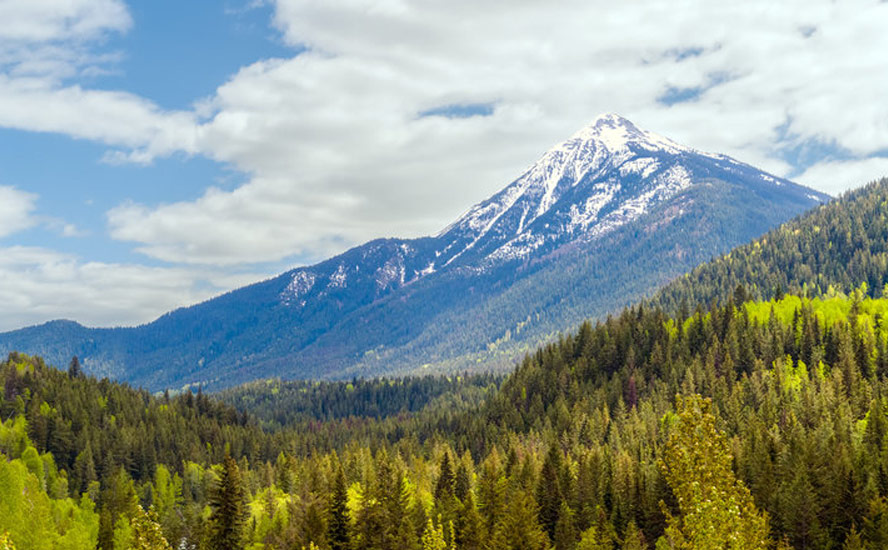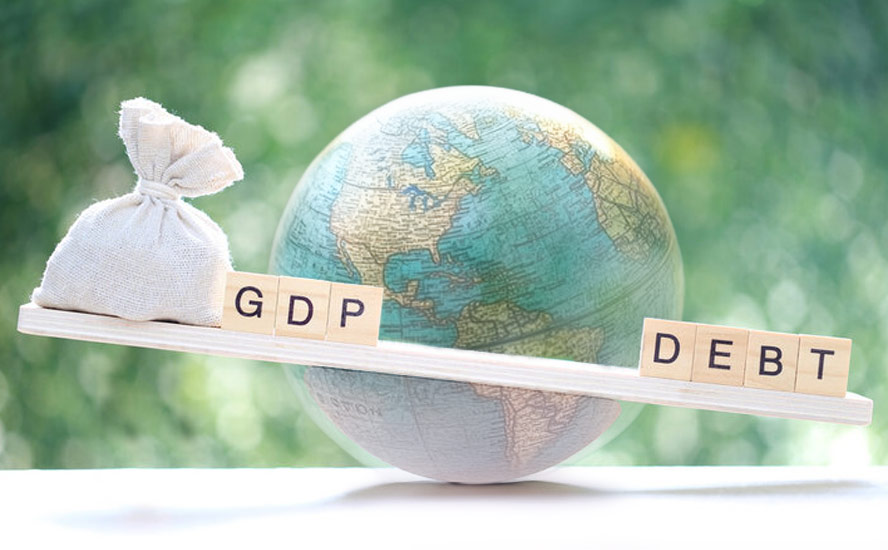Resource extraction melee

2019.07.03
A headline this week from The Northern Miner grabbed my attention – ‘Proposed US mining legislation follows strict party lines – editorial’.
The mining publication states in an editorial that a piece of highly restrictive legislation is being proposed by a Democratic congressman from Arizona. Raul Grijalva’s Hardrock Leasing and Reclamation Act of 2019, co-sponsored by Alan Lowenthal (D-Calif.) would replace the General Mining Act of 1872 which is often criticized by environmentalists. The Northern Miner states:
For miners, probably the worst part of the bill is its proposed imposition of a 12.5% royalty on all new mining operations, and 8% on existing ones. This, say the bill’s proponents, would result in hard-rock miners paying the same royalties as the oil and gas and coal-mining industries.
The irony here is delicious. On one hand we have a currency war started by the United States, through granting the US Commerce Department carte blanche powers to slap sanctions on a country that devalues its currency to the detriment of the US economy. On the other hand we have a new mining law being proposed that is going to discourage investment into mining, in fact make it extremely difficult to make a profit – just when domestic mining is most needed – with the electrification of the transportation system demanding millions of tonnes of critical metals like lithium, cobalt and graphite, the US doesn’t have, and the defense industry needing tonnes of rare earths for building weapons and equipment.
President Trump wants to make America great again by bringing manufacturing back to the US, by intentionally weakening the dollar, fixing the trade deficit, and imposing crippling tariffs on everybody. But by taxing the hell out of mining, the US will remain dependent on countries that control those minerals – like China, South Africa and the DRC, which is pretty much owned by China.
How do you repatriate manufacturing by killing mining? It doesn’t make any sense. Manufacturers need mined metals like iron ore, coal, magnesium and vanadium for steelmaking, aluminum, copper, zinc, lead, and that’s just for a start. Consider too, all the critical minerals for which the US is up to 100% dependent on foreign countries, such as cobalt, lithium, graphite and rare earths.
The Miner quotes Mark Bristow, the CEO of Barrick Gold, which is venturing most of its Nevada assets with Newmont Goldcorp, saying the proposed bill “will screw up this deal. That will take away everything we want to unlock.”
The Democrats screw mining while the Republicans start a currency war and lead the country into the next recession. Sounds like politics as usual, the left not working with the right, in Washington.
In this article we’re looking at the politics of resource extraction, in Canada and the United States. How very different visions of a future economy, divided into left and right camps, are making a complete hash of oil and gas development and mining – at a crucial time in our ecological history.
We need to come up with a coherent policy that both addresses reduction of fossil fuels and promotes the mining of metals that will help build a new electrified economy based on electric vehicles and a greater mix of clean power, including nuclear. Instead we have an utter melee of competing mining/ energy/ climate policies on both sides of the 49th parallel. Unless these can be straightened out, the real loser is going to be environment and the next generation that will have to live with the consequences of inaction.
Pipeline politics
Pipeline politics is a strange beast that Canadian are fed a steady diet of, still being a country that hews wood, draws water and pumps oil. Good luck trying to make sense of the political parties’ positions and some of the decisions that have been made – Prime Minister Trudeau’s climate policy for example gives a fresh meaning to the expression “sleight of hand”. Let’s start there.
In British Columbia it made sense to nationalize a pipeline project by spending four and a half billion on it last year and taking it off the hands of Kinder Morgan, the major US-based pipeline builder trying to develop the Trans Mountain Expansion Project.
The proposal would twin the Texas-based company’s existing pipeline, allowing a tripling of crude oil from 300,000 barrels to 890,000 barrels a day, from Alberta to Burnaby, while also triggering a seven-fold increase in the number of oil tankers coming and going from Vancouver Harbour.
Kinder Morgan said the pipeline would mean $7.4 billion to the Canadian economy through project spending, generate 800,000 direct and indirect jobs—189,000 person-years for BC during construction and operations and 441,000 for Alberta.
But it was opposed, vehemently, by the City of Burnaby, the City of Vancouver and the BC government, mostly, they postured, due to the increased tanker traffic.
The Alberta government tried to stop what it saw as BC meddling in Alberta’s oil industry by slapping a boycott on BC wines. Although that ban was lifted a few weeks later, the feud escalated. Alberta passed Bill 12, a landmark piece of legislation giving it sweeping powers to intervene in oil and gas exports—including stopping the flow of hydrocarbons to British Columbia.
After years of protests on Burnaby Mountain, court injunctions, environmental reviews and raucous public meetings, Kinder Morgan finally gave up on the project last summer – agreeing to sell it to the BC government for an eye-popping $4.4 billion of taxpayer money.
Most of us in the resource industry figured that was the end of TMX, as the project is also known. So we were surprised when the federal Liberals announced recently that it could have shovels in the ground as early as this summer.
It’s good to hear the pipeline is finally moving forward, but its nationalization exposes some uncomfortable truths. For one thing, why is it so easy to get shovels in the ground for a project that is owned by the government? Could it be that Ottawa greased a few palms along the way? Secondly, where are the protesters? It seems it was much more fulfilling to shout down a big US energy company than our Canadian government. Not sure if 300 people marching to a beach on Vancouver Island counts as vigorous opposition, anymore.
It’s also curious that, while BC indigenous groups linked arms with eco-protesters during the time that Kinder Morgan was spearheading the pipeline expansion, they are now supporting it. Bands along the line are reportedly quibbling over who should get an ownership of TMX.
Then there’s the BC NDP’s weird schizophrenia over the environment.
While the NDP sided with environmentalists in opposing the Northern Gateway Pipeline that would have moved oil east to west from the Alberta oilsands to the BC coast (the project was eventually quashed by Justin Trudeau) it was less sure about a proposed expansion of Kinder Morgan’s existing pipeline that would significantly increase the amount of crude oil shipped through Vancouver’s waterways.
During the 2013 election, then-NDP Opposition leader Adrian Dix first said he wanted to wait to see a proposal from the Texas-based company before taking a position on it, but then, a week into the four-week campaign, Dix suddenly announced he was against the project. The about-face seriously backfired and has been widely pointed to as a major factor in the NDP’s surprise loss to the Liberals.
Energy flip-flops
Next, the hypocrisy behind the NDP’s bull-headed opposition to the Kinder Morgan Pipeline, and suddenly “finding religion” in LNG.
From the day he was re-elected in May 2017, Horgan listened to the party’s environmental wing and argued passionately against the pipeline, continually reminding the public that it would mean a seven-fold increase in tanker traffic leading to a possible spill of heavy oil at sea.
Environment Minister George Heyman, a former Sierra Club executive director, led the charge against the federal government that backed the project, even trying to ask the courts whether BC has jurisdiction to limit substances deemed harmful to the environment from entering the province. It doesn’t, the court ruled recently.
Questionable LNG
The irony of the BC NDP’s position became apparent last September when it welcomed a final investment decision by Shell and its Asian partners to go ahead with LNG Canada in Kitimat – after a CAD$5.3 billion tax break.
The NDP’s acceptance of LNG is all the more puzzling considering that in 2016 the party filed a position with federal authorities against the Pacific Northwest LNG project, citing an increase in greenhouse gas emissions; that project has since been rejected by its proponent, Petronas.
While in Opposition, the BC NDP railed against BC Liberal government policies it deemed unfriendly to the environment, including the proposed Site C dam and over a dozen envisioned LNG projects the NDP said would belch too much pollution.
Yet when the NDP won power, its majority propped up by three Green Party MLAs, it was business as usual.
While the NDP passed an ambitious new climate plan, it settled back into the groove of supporting fossil fuels, in particular the rapid and massive acceleration of natural gas fracking and LNG. And it approved Site C.
The Globe and Mail’s Justine Hunter explains why:
The environment was never a big part of the BC NDP’s election platform in 2017. The party promised to work on climate action, but made no mention of Site C, or an environmental disaster at the Mount Polley mine. A seismic shift on ecological policies was not part of the New Democrats’ promise to voters.
Indeed, the BC government has done a complete 180 on the environment since grabbing the reins of government, welcoming LNG Canada into the province with open arms, including a $5B tax break.
Also, LNG Canada is getting more ambitious in its plans to build BC’s first liquefied natural gas (LNG) facility at Kitimat. The head of the consortium of Asian energy companies led by Shell Canada said earlier this year that it’s only a matter of time before the group commits to an expansion.
The $40 billion project currently under construction envisions two “trains” – industry parlance for the system of compressors that turns the natural gas into liquid for shipment – that would output an estimated 14 million tonnes per year. Two more trains to be built later (or sooner) would double production to 28MMtpa.
Nothing wrong with ambition. The problem is, an LNG industry will not only derail the NDP’s climate plan envisioning a 40% reduction in greenhouse gases by 2030, (contrary to popular belief the LNG industry and its supply of hydraulically-fractured gas is both polluting and geologically destabilizing), it’s also building LNG capacity at exactly the wrong time.
According to a recent article in The Financial Post, a slowing Chinese economy is limiting the appetite for LNG in northeast Asia, where most of the world’s LNG importers are, and where BC plans to ship its liquefied gas product. January to June is expected to be first half-year since 2015 that LNG imports to NE Asia have declined.
Truth is, BC is late to the LNG game. Shipments from new terminals in Australia, Russia and the US, which continues to frack its huge shale gas plays, are swamping the market, with supplies already up 14% this year. The glut is expected to last at least until the end of 2020, the FP quotes Bank of America Merrill Lynch.
Energy consultants Wood Mackenzie has said LNG Canada would need prices of around $9 per million Btu to break even. Other analysts think prices may need to be even higher. As of last Friday, Asian spot prices for delivery in August were US$4.60 per million BTU, down about 30 cents.
LNG Canada better hope that prices pick up before the first LNG tankers cast off to Asia in the mid-2020s. The consortium may actually be forced to accept lower prices (like oilsands producers have to take a lower price from Gulf Coast refineries for Western Canada Select crude, due to shipping costs), in order to compete with Russian gas which is much, much closer to Asian markets than northern BC. Just for fun, check out what Russia is planning in Siberia:
While Russia’s gas giant Gazprom is working to complete the Power of Siberia gas pipeline expected to begin delivering gas to China in December 2019, another Russian company — the country’s biggest liquefied natural gas (LNG) producer Novatek — is looking to boost LNG supply to the growing Asian market.
While it continues to keep more than a third of the European gas market with pipeline gas supply, Russia is also increasingly looking east and aiming to take a larger portion of the booming Asian LNG demand, led by China.
Novatek has one producing LNG plant, Yamal, and aims to reach a final investment decision (FID) on another one, Arctic LNG 2, this year.
The two faces of Trudeau
In trying to please both the oil industry and supporters of the environment, Prime Minister Trudeau has actually earned the derision of both sides.
When the golden-boy son of Pierre ran a campaign to unseat Prime Minister Stephen Harper in the last federal election, a key message was that he would not let a pipeline run through BC’s Great Bear Rainforest, and that he would honor a moratorium on oil tankers off the province’s northern coast.
In killing the proposed Northern Gateway pipeline that would cross northern Alberta BC on its way to Kitimat, Trudeau appeared to uphold those two promises.
But then he reneged, by approving two other projects, Enbridge’s Line 3 carrying oil from Alberta to Wisconsin, and Kinder Morgan’s Trans Mountain Pipeline.
Pipelines are seen as the key to unlocking the crisis that has gripped Alberta since 2014 when the oil price abruptly plunged, putting many Albertans on the dole. They would relieve the glut of Canadian oilsands crude that is keeping the price suppressed.
Trudeau talks a good game but has done little to help Alberta oil producers. Nearly a year after the government’s purchase of Trans Mountain, there are no shovels in the ground. A promised law asserting Ottawa’s constitutional authority over pipeline construction came to nought. And Trudeau has lost much of the green lobby he courted in 2015, in abandoning his promises to protect the environment.
While Trudeau slapped an oil tanker ban in northern BC – the closest coast to tidewater – his government embraced LNG in British Columbia – even giving $275 million to the LNG Canada consortium that is building the $40-billion liquefied natural gas compressor plant and pipeline to move gas between northeastern BC and Kitimat.
His commitments to reducing greenhouse gases are equally two-faced. The New York Times exposes the unprincipled, politically expedient route the PM has taken with respect to the climate and resource files:
At the Paris climate summit meeting in December 2015, Canada’s freshly elected prime minister, Justin Trudeau, took the podium before his new international fan club and declared, “Canada is back, my friends!”
The young, charismatic Mr. Trudeau promised “sunny ways.” He was ideally positioned to shift the country to a greener future, away from its reliance on resource industries and toward improved relations with Indigenous peoples whose territories are imperiled by energy projects. Yet more than halfway through his mandate, he has adopted the backward energy and economic policies of his predecessor Stephen Harper, an ardent fossil-fuel promoter. Mr. Trudeau has revealed himself to be not a climate crusader, but a pipeline pitchman who tells the world one thing while doing the opposite at home.
Within a year of committing in Paris to ambitious targets, Mr. Trudeau and his federal Liberal Party had rendered his pledge meaningless. The government approved a pair of heavy-oil pipelines and a liquefied natural gas plant. Its members secretly cheered as Donald Trump was elected, and moved toward resurrecting the Keystone XL pipeline. (Two other pipeline projects were terminated earlier in Mr. Trudeau’s term, but he can’t take credit; one was quashed in court and the other was canceled by the company.)
Perhaps the most striking example of Trudeau’s delicate balancing act, to put it kindly, happened when the federal Liberals said recently they will move ahead with construction of the TMX pipeline. On Monday, June 17, the House of Commons passed a motion declaring a national climate emergency in Canada. The next day, it approved the pipeline. Does this sound like a government with a plan?
Climate plan chaos
In a bit of twisted logic, Trudeau and his Environment Minister, Catherine McKenna, reasoned that in order for Canada to meet its international carbon emissions reduction obligations, it would impose a national carbon tax. Knowing that a carbon tax wouldn’t go over big in Alberta, Trudeau rejected Northern Gateway, which faced impossibly high hurdles in First Nations and environmental opposition, and instead green-lighted Kinder Morgan.
Since it was not a new pipeline but an extension of an existing one, Trudeau likely reasoned it would face less opposition than Northern Gateway He was obviously wrong about that, as the protests on Burnaby Mountain, just outside of Vancouver, demonstrated. Thus, the bargain struck in 2016 was a carbon tax in return for Alberta being granted a route for its bitumen from the oilsands, and a way out of the current dilemma of chock-full pipelines forcing producers to accept a discount on Canadian crude oil.
The federal carbon tax means that large industrial facilities, emitting over 50,000 tonnes of carbon dioxide equivalent per year, will be taxed on the CO2 they produce, starting in January 2019. The goal is to reduce greenhouse gas emissions by 80% by 2050.
The tax starts at $20 a tonne and increases by $10 a year until it reaches $50/t.
The tax also grabs fuel companies. By 2022 11.6 cents a liter will be added to the cost of gasoline. Diesel, aviation gas and aviation turbo fuel will also be taxed.
The Liberal government in Ottawa said it would levy a carbon tax on provinces and territories that don’t already have one, to be effective on April 1. Currently BC, Alberta, Ontario and Quebec have carbon taxes.
That went over like a lead balloon with provinces that have significant carbon-intensive mining and oil and gas operations. Alberta and four other provinces representing half of Canada’s population, have opposed the carbon tax. They are currently launching court challenges, claiming the tax is unconstitutional.
So much for the provinces and the federal government putting their heads together in figuring out how to fight climate change. Earlier this year a scientific report indicated that Canada is warming twice as fast as the rest of the world, with the largest temperature changes recorded in the north, the Prairies and northern BC.
Bill C-69, pipeline killer
The Trudeau government has faced criticism on another front regarding increased regulation of resource extraction. Bill C-69, which recently became law.
The legislation broadens the scope of the environmental assessment process and adds more consultation with the public and particularly indigenous groups.
Read more about the controversial legislation here
Critics say Bill C-69 will create more red tape around getting Canadian oil to tidewater, and cause uncertainty for future pipeline projects; newly-elected Alberta Premier Jason Kenney has called it the “No More Pipelines Bill.”
Pipeline bromance?
Trudeau and US President Donald Trump have a testy relationship but one area they seem to have found common ground on, is oil transportation. One of Trump’s first acts after inauguration, in January 2017, was to green-light the Keystone XL pipeline – an $8-billion project that would carry over 800,000 barrels of Alberta oil a day to refineries in Texas.
Trudeau reportedly told Trump that Canada backs the pipeline, which missed the 2019 construction season due to court delays. A federal judge in Montana last November ordered additional environmental reviews.
“I reiterated my support for the project. I’ve been on the record for many years supporting [Keystone XL] because it leads to economic growth and good jobs for Albertans,” Trudeau told reporters after learning of Trump’s approval of Keystone.
Former President Obama opposed the project on climate grounds.
Equally interesting from a Canada-US relations point of view is an article in The Guardian claiming that the Trudeau Liberals heralded Donald Trump’s 2016 win as “positive news” for the Canadian energy industry:
Meetings conducted by senior government officials with TransCanada and the Canadian Association of Petroleum Producers (CAPP) reveal an one-sided approach more reminiscent of former Prime Minister Stephen Harper’s secret oil advocacy than Justin Trudeau’s green electoral promises.
The documents, obtained through access-to-information, show the Parliamentary Secretary to Canada’s Foreign Affairs Minister met around the same time with TransCanada’s CEO Russ Girling and CAPP to discuss the continued promotion of the pipeline and oil exports.
While Trudeau and Trump seem simpatico on oil pipelines, the two countries are working at cross-purposes on mining. And while the Trump administration is pushing for more offshore oil exploration and to revive a dying US coal industry, the Democrats across the aisle in the House of Representatives are doing everything they can to stymie fossil-fuel energy development. Instead, the Dems introduced their frankly ridiculous “New Green Deal” that was subsequently kiboshed by the Senate, and are now conspiring to kill mining by introducing new legislation that would levy up to a 12.5% net smelter royalty on mine production.
Offshore oil fight
The United States not too long ago became a net exporter of oil after decades of importing more crude from Canada, the Middle East and Venezuela than it produced domestically, thanks to a massive increase in shale oil and gas development.
The Trump administration has taken that a step further by advocating for expanded offshore drilling – the idea being not only to make the US even more energy-secure, but to help reinvigorate a slow manufacturing sector and create more high-paying jobs.
The plan was to open up leases off the coasts of Alaska, in the Pacific and Atlantic regions, and in the Gulf of Mexico. But as USA Today reports, while Republicans could get behind Trump’s energy agenda of bringing back coal, expanding mineral extraction on public land, and reviving nuclear energy, when it comes to the president’s proposal to massively expand offshore oil and gas drilling, many GOP leaders in coastal states want no part of exploration near their beaches or maritime communities.
Meanwhile a block of House Democrats in January lined up against a draft Proposed Outer Continental Shelf Oil and Gas Leasing Program, which defines the administration’s vision for offshore oil and gas drilling. Seven Democrats each introduced bills blocking offshore drilling in one or more regions, on environmental protection grounds. The draft would open over 90% of American waters to oil and gas development.
Coal vs New Green Deal
On June 19, a stripped-down Environmental Protection Agency issued the final Affordable Clean Energy (ACE) Rule, which officially replaced Obama’s Clean Energy Plan, which set the first US limits on carbon emissions from coal-fired power plants. The new bill lets states decide whether or how to regulate pollution from coal-power stacks.
In response to the Trump administration’s pivot to fossil fuels, Democrats have come out with the New Green Deal, a controversial agenda for dealing with climate change by radically reducing greenhouse gases, while at the same time addressing social inequality. In March the Senate rejected a motion to consider the plan, by a count of 57 lawmakers to 0. Trumpeted by wing-nut New York Democrat Alexandria Ocasio-Cortez, the New Green Deal would virtually eliminate greenhouse gas emissions by 2030, by shifting away from oil and coal. It would also bring in national healthcare coverage, job guarantees, affordable, energy-efficient housing and higher education standards.
Republicans dismiss the New Green Deal, saying the plan would devastate the economy and result in a huge tax increase.
Oil exploration and coal development are two examples of the extreme partisanship we are seeing in American politics.
Critical metals vs uranium
A third is the approach being taken to mining. Trump is the first president since World War II to recognize that the United States’ dependence on foreign countries for the supply of critical metals like vanadium, manganese and lithium, is a problem.
In 2017 Trump passed an executive order to explore for and develop these minerals. In recently meeting with Trudeau, the pair reportedly ordered officials to develop a plan for US-Canada collaboration on critical minerals. The US was motivated to team up with Canada following a threat by China to use rare earths as a bargaining chip in the current trade war.
That is an extremely positive development regarding the strengthening of America’s metallurgical achilles heel, and a much-needed point of agreement after months of tense negotiations over a new NAFTA, but the current administration, in its obsession to protect US industries, is at the same time targeting uranium mining.
Also, while the White House apparently deems steel and aluminium to be worthy of protection, it dropped critical metals off a long list of tariffs to be borne by China, due to the fact that the United States is so dependent on them. The country can’t afford to risk interfering with the supply chains of rare earths, used by the military to make weapons and equipment, which are among a list of 35 minerals deemed critical to US security and economic prosperity.
“These materials are critical to U.S. industry and defense, and with nowhere else to turn for supplies in the near-term, the tariffs would invoke more suffering on U.S. end-users than China,” Ryan Castilloux, managing director of consultancy Adamas Intelligence, told Reuters.
And while a hunt for domestic critical metals would seem to support a nascent US mine-to-electric vehicle supply chain, such as cobalt, lithium, nickel and graphite used in EV batteries, Trump in March threw a spanner into that plan.
The White House in March proposed eliminating a tax credit worth up to $7,500 on the purchase of new electric vehicles, as a way of saving the government $2.5 billion over the next decade.
Another BC flip-flop
Meanwhile the provincial government of British Columbia, having last year rolled out an ambitious climate plan, just did a version of the same thing.
Last Saturday Victoria said it was reducing its rebate program for battery, fuel-cell and longer-range plug-in hybrid vehicles to $3,000 from $5,000. For shorter-range plug-in hybrid electric vehicles the rebate falls to 1,500 from the previous $6,000 for a hydrogen fuel-cell vehicle.
Pretty tough to convince the public to buy EVs, en route to an emissions-free vehicle fleet in BC, when incentives are being removed. Last time we checked, EVs were priced a lot higher than regular gas or diesel-powered cars.
That’s on top of the Canadian government’s anti-mining, anti-pipeline Bill C-69 which, on the face of it would appeal to clean, green-energy types, unless you consider that nearly every raw material needed for renewable energies and electric vehicles comes from mining. The bill was just approved by the Senate. According to Global News, it sets up a new authority to assess industrial projects, such as pipelines, mines and inter-provincial highways, for their effects on public health, the environment and the economy.
From our reading of it, Bill C-69 will move us to a situation where the cards are thoroughly stacked against a resource proponent. To learn how, read Road to a mining ‘yes’ littered with obstacles in Canada
Uranium u-turn
President Trump is reportedly weighing tariffs on US uranium imports, using the same justification as steel and aluminum, ie. citing national security concerns. The country’s only two uranium miners, Energy Fuels Inc. and Ur-Energy Ltd., have complained about state-owned uranium companies in countries like Russia and Kazakhstan, dumping cheap uranium on the world market.
If tariffs are levied on uranium, it would hurt Canada’s Cameco, among the largest uranium miners in the world, which has already closed mines due to near-decade low prices for U3O8, the nuclear fuel.
Conclusion
If there’s one thing that we can all agree on, it’s to try and clean up our environment and limit the effects of climate change – man-made or nature-caused, take your pick it doesn’t matter – by moving away from the use of fossil fuels.
To do that requires a global consensus and plan of action that is so colossal and far-reaching, it is beyond the ability of our current decision-makers. Even on a North American level, this article has shown that we have a mash of policies, laws, and positions, indelibly linked to political ideologies, that prevents a move in the direction of saving the planet, which at the end of the day, is the real loser in this.
It’s time to end political partisanship, oppose fossil fuel development, and embrace domestic mining of critical minerals and other metals that will help move us to a successful electrification of the transportation system, along with a greater mix of renewables energies to support base-load power for the foreseeable future.
Doing this would not only clean up the atmosphere, but help develop the foundation of a new, clean-tech economy with real jobs and living wages to allow economies and populations to keep thriving, even on a warming planet.
Richard (Rick) Mills
subscribe to my free newsletter
Ahead of the Herd Twitter
Ahead of the Herd FaceBook
Legal Notice / Disclaimer
This document is not and should not be construed as an offer to sell or the solicitation of an offer to purchase or subscribe for any investment. Richard Mills has based this document on information obtained from sources he believes to be reliable but which has not been independently verified. Richard Mills makes no guarantee, representation or warranty and accepts no responsibility or liability as
to its accuracy or completeness. Expressions of opinion are those of Richard Mills only and are subject to change without notice. Richard Mills assumes no warranty, liability or guarantee for the current relevance, correctness or completeness of any information provided within this Report and will not be held liable for the consequence of reliance upon any opinion or statement contained herein or any omission. Furthermore, I, Richard Mills, assume no liability for any direct or indirect loss or damage or, in particular, for lost profit, which you may incur as a result of the use and existence of the information provided within this Report.
Legal Notice / Disclaimer
Ahead of the Herd newsletter, aheadoftheherd.com, hereafter known as AOTH.Please read the entire Disclaimer carefully before you use this website or read the newsletter. If you do not agree to all the AOTH/Richard Mills Disclaimer, do not access/read this website/newsletter/article, or any of its pages. By reading/using this AOTH/Richard Mills website/newsletter/article, and whether you actually read this Disclaimer, you are deemed to have accepted it.


























